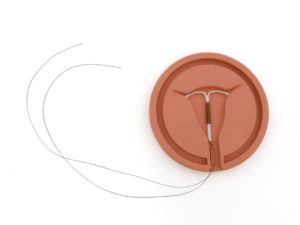
A patient I’ll call Miranda came to see me in my office, and she had two main questions:
- What are my best options for birth control at my age?
- How can I make my periods better?
Miranda was 32, and she and her husband weren’t sure if they wanted more children or if they were done having kids.
She was ready to take some form of birth control, but she had heard conflicting stories from her friends about different forms of birth control—the pill, the IUD and the arm implant. She had read about each of them, but was still unclear which one would be best for her.
Although Miranda’s periods were becoming closer together and heavier, they were also irregular in that she could have normal cycles in between. As a teacher, Miranda expressed concern that she could not easily leave the classroom in an emergency bathroom situation, and she was afraid of having an accident in the classroom.
Miranda told me she had taken the birth control pill in the past, but she suffered from some side effects. Understandably, she was hesitant to take the pill again.
Even though her periods were “better” on the pill, she often felt moody and irritable, and had a less spontaneous sex drive. She said, “I just don’t do well with hormones,” and she also assumed the IUD was not an option for her.
Miranda was surprised when I told her that her concern about hormones was actually a reason why the IUD could be a good answer for her. She was all ears and wanted to learn more.
We then spent some time talking about the IUD. I explained to Miranda that this form of contraceptive comes in two forms: one is made of copper, and the other is made of flexible plastic and contains progesterone. They both work in similar ways to provide birth control, but the IUD with progesterone also has the benefit of improving periods by making them much lighter or even stopping them completely (depending on which IUD is chosen).
The Paraguard IUD—made with copper—can make periods heavier at first before eventually returning to normal. This sounded like a good option for Miranda because there are no added hormones involved.
The IUD is easy to insert in the vagina, but, regardless of which one a woman chooses to use, it should always be done by a health care provider in the office. It should be placed by a doctor, nurse practitioner or certified midwife who is experienced and comfortable with the procedure.
It’s also important to note that it is best to have the IUD placed during or immediately after your period to be sure you are not pregnant.
In addition, if there is any question about uterine fibroids or having a uterus with a misshaped cavity, an ultrasound should be done before having the IUD inserted. Women who have never been pregnant are also candidates for the IUD.
There are many myths about this form of contraceptive, and it’s important to separate fact from fiction so you can make an educated decision about whether the IUD is a good choice for you. The facts are based on doctors’ experiences and good research from all over the world.
Here are several facts you should know as you consider whether or not the IUD is a good choice for you:
- The IUD does not cause infertility.
- The IUD only has a slight risk of infection associated with putting it in place.
- The IUD can be removed easily at any time.
- Complications from using the IUD are rare. These include uterus perforation, migration out of the uterus, poking into the uterus wall or falling out.
- The IUD without progesterone is made of copper and is good for nine years.
- The IUD with progesterone:
- comes in a variety of choices, containing different sizes and doses of progesterone.
- provides excellent birth control and does not require taking a daily pill.
- is FDA approved and has been proven to make periods lighter or stop completely.
- has shown that it is helpful in reducing endometriosis symptoms, including pain, bowel complaints and bloating.
- can be used to treat precancerous cells in women and reduce the risk of uterine cancer in women with high risk factors, such as polycystic ovary syndrome, obesity and Type 2 diabetes.
- can be very helpful in women older than 40 who want to stop using the pill for birth control, but want help with irregular periods.
- can be used off label for protection of the lining of the uterus with FDA-approved estrogen medications for menopause-related symptoms such as hot flashes and night sweats.
- can be used safely in many women with risk for blood clots who cannot take the birth control pill or use systemic progesterone like the implant or shot.
 /a>
/a>
 /a>
/a>
 /a>
/a>
Informative article.